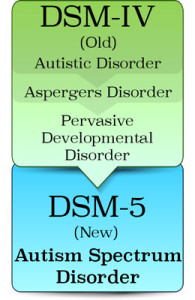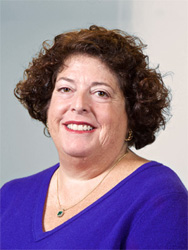What is autism spectrum disorder and what are the characteristics associated with it?
Page 1: What Is Autism Spectrum Disorder?
 Autism spectrum disorder (ASD) is a developmental disability that can result in significant delays and developmental differences in a number of areas, including communication, social interaction, and behavior. The major characteristics of ASD are:
Autism spectrum disorder (ASD) is a developmental disability that can result in significant delays and developmental differences in a number of areas, including communication, social interaction, and behavior. The major characteristics of ASD are:
- Persistent deficits in an individual’s social communication and social interaction across contexts (e.g., difficulty initiating or responding to social interactions, displaying or interpreting facial expressions, or showing interest in peers)
- Restricted, repetitive patterns of behavior, interests, or activities (e.g., flapping of hands, difficulty handling changes in routine, highly focused interest, atypical responses to sensory input)
atypical responses to sensory input
Hyper- or hypo-sensitivity to sensory inputs common among individuals with autism; might lead to issues related to:
- Clothing (e.g., too scratchy, too tight, irritating seams)
- Food (e.g., texture, temperature, consistency)
- Noise (e.g., volume, pitch, unpredictable or inconsistent sounds)
- Light (e.g., brightness, flashing)
- Touch (e.g., hugs, walking barefoot on grass)
- Pain (e.g., high threshold or indifference to pain)
Research Shows
- The number of individuals identified as having ASD is increasing at a staggering pace. The current prevalence of ASD is 1 in 36, up from 1 in 68 in 2010, 1 in 150 in 2000, and 1 in 10,000 in 1989.
- ASD is approximately four times more likely in boys than in girls.
- ASD is reported to occur in all racial, ethnic, and socioeconomic groups.
- Only 38% of children identified with ASD also have an intellectual disability.
- Parents who have one child with ASD have a 20% higher likelihood of having another child with ASD.
- A number of studies have shown that there is no link between vaccines and the development of ASD.
(Dawson & Bernier, 2013; U.S. Centers for Disease Control and Prevention [CDC])
Listen as Wendy Stone discusses some contributing factors for the increasing prevalence of autism.

Wendy Stone, PhD
Professor, Educational Psychology
Director of the Research in Early Autism Detection and Intervention Lab
University of Washington
(time: 1:33)
Transcript: Wendy Stone, PhD
There has been a lot of press about the increasing prevalence of autism. For somebody who’s been in the field as long as I have, it is striking and remarkable. The reasons are not entirely clear, but there are certainly some contributing factors that need to be considered. One is that diagnostic systems change, and so the criteria become more liberal. Then more children will be included within that diagnostic framework as having autism. We’re also getting much better at identifying children with milder forms of autism, so that’s going to increase the pool of children. Probably one of the biggest factors is greater awareness about autism now. When I started in the field thirty years ago, people just never heard of autism. I would explain to parents this is what their child had, and there would be a blank facial expression. In contrast now, when parents come in they’re often asking about whether their child has autism. Autism is a household word; there are lots of organizations focused on it, there’s lots of information about it in the news and elsewhere. Another factor is that children are being identified at younger ages now, so we’re having two-year-olds included in the count when we look at prevalence of autism. One other thing is that the services tend to be improving, and so sometimes services for children with autism are desired, and families want to make sure that they get an accurate diagnosis so that they can receive the services.
Diagnostic and Statistical Manual of Mental Disorders (DSM-5-TR)
A guide developed by the American Psychiatric Association as a reference in the diagnosis of mental disorders, which includes a summary of symptoms and diagnostic criteria.
 The most recent version of the Diagnostic and Statistical Manual of Mental Disorders (DSM-5) presents a major change in how ASD is described and diagnosed. Most notably, several categories of pervasive developmental disorders (i.e., autistic disorder, Asperger’s disorder, and pervasive developmental disorder) are now classified under the umbrella diagnosis of ASD. This means that there is no longer a diagnosis of Asperger’s disorder; children who would have fallen under this category in the past are now diagnosed as having autism spectrum disorder. Click the link below for a summary of these differences as well as a comparison across the last two editions of the DSM and IDEA ‘04.
The most recent version of the Diagnostic and Statistical Manual of Mental Disorders (DSM-5) presents a major change in how ASD is described and diagnosed. Most notably, several categories of pervasive developmental disorders (i.e., autistic disorder, Asperger’s disorder, and pervasive developmental disorder) are now classified under the umbrella diagnosis of ASD. This means that there is no longer a diagnosis of Asperger’s disorder; children who would have fallen under this category in the past are now diagnosed as having autism spectrum disorder. Click the link below for a summary of these differences as well as a comparison across the last two editions of the DSM and IDEA ‘04.
Some of the terminology surrounding ASD can be confusing. For example, many people use the term “ASD,” while others prefer “autism,” and some use them interchangeably. Listen as Ilene Schwartz discusses why both of these terms are used.
Ilene Schwartz, PhD
Professor Emeritus, Special Education
Director, Haring Center for Research and Training in Inclusive Education
University of Washington
(time: 0:44)

Transcript: Ilene Schwartz, PhD
The confusion between the terms “autism spectrum disorders” and “autism” is that we have two different guides that we’re using. IDEA, the Individuals with Disabilities Education Act, still uses the term “autism.” The DSM-5, which is the manual that is used to diagnose children with autism, uses the term “autism spectrum disorders.” So the more accurate term and the more encompassing term is “autism spectrum disorders,” but I think in practice people use them interchangeably.